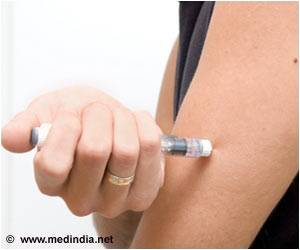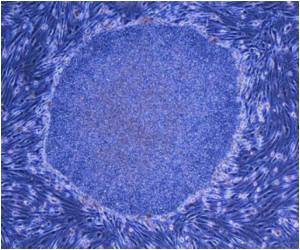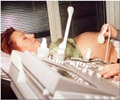Skin cells from diabetic foot ulcers can be reprogrammed to acquire properties of embryonic-like cells, revealed researchers.

‘Skin cells from diabetic foot ulcers can be reprogrammed to acquire properties of embryonic-like cells.’





A second study from the research team published in Wound Repair and Regeneration found that a protein called fibronectin is linked to a break-down in the wound-healing process in cells from diabetic foot ulcers. "The results are encouraging. Unlike cells taken from healthy human skin, cells taken from wounds that don't heal - like diabetic foot ulcers - are difficult to grow and do not restore normal tissue function," said senior author on both studies, Jonathan Garlick, stem cell researcher at Tufts University School of Dental Medicine in Boston. "By pushing these diabetic wound cells back to this earliest, embryonic stage of development, we have 'rebooted' them to a new starting point to hopefully make them into specific cell types that can heal wounds in patients suffering from non-healing wounds."
The research team successfully reprogrammed cells from diabetic wounds to an embryonic-like state and turned them into cell types that are important for wound healing. Using three independent criteria, they confirmed that the cells had been reprogrammed to a pluripotent state, which means that they can be turned into a variety of different cell types, including those that can stimulate wound repair.
As a next step, the research team created 3D engineered tissues that they had previously found to mimic many features of chronic wounds. They used these 3D tissues to test the properties of cells from diabetic foot ulcers and found that cells from diabetic ulcers get stuck making an immature scaffold made up predominantly of a protein called fibronectin that is likely to prevent proper closure of wounds. Fibronectin has been shown to be abnormal in other diabetic complications, such as kidney disease, but this is the first study that directly connects it to cells taken from diabetic foot ulcers.
"The development of more effective therapies for foot ulcers has been hampered by the lack of realistic wound-healing models that closely mimic the function of the extracellular matrix, which is the scaffold critical for wound repair in skin," said Anna Maione, first author on the Wound Repair and Regeneration study who did this work as part of her Ph.D. studies in Cell, Molecular & Developmental Biology at the Sackler School and her post-doctoral work at Tufts University School of Dental Medicine. "This work builds on our paper published in 2015 that showed that cells from diabetic ulcers have fundamental defects which we can simulate using our 3D tissue models grown in the lab. These models will be a great way to test new therapeutics that could improve wound healing and prevent limb amputation which can result when treatments fail."
Advertisement
"The findings advance commonly-held assumptions about how diabetic foot ulcers develop. Most importantly, our ability to reprogram these cells gives us new treatment avenues to pursue. The big question is - since we have created induced pluripotent stem cells which we can now make into many cells types important for wound healing - will they be better for wound healing than cells originally taken from the non-healing wound?" asked Garlick, who is also a member of the Cell, Molecular & Developmental Biology program faculty at the Sackler School.
Advertisement
Source-Newswise















